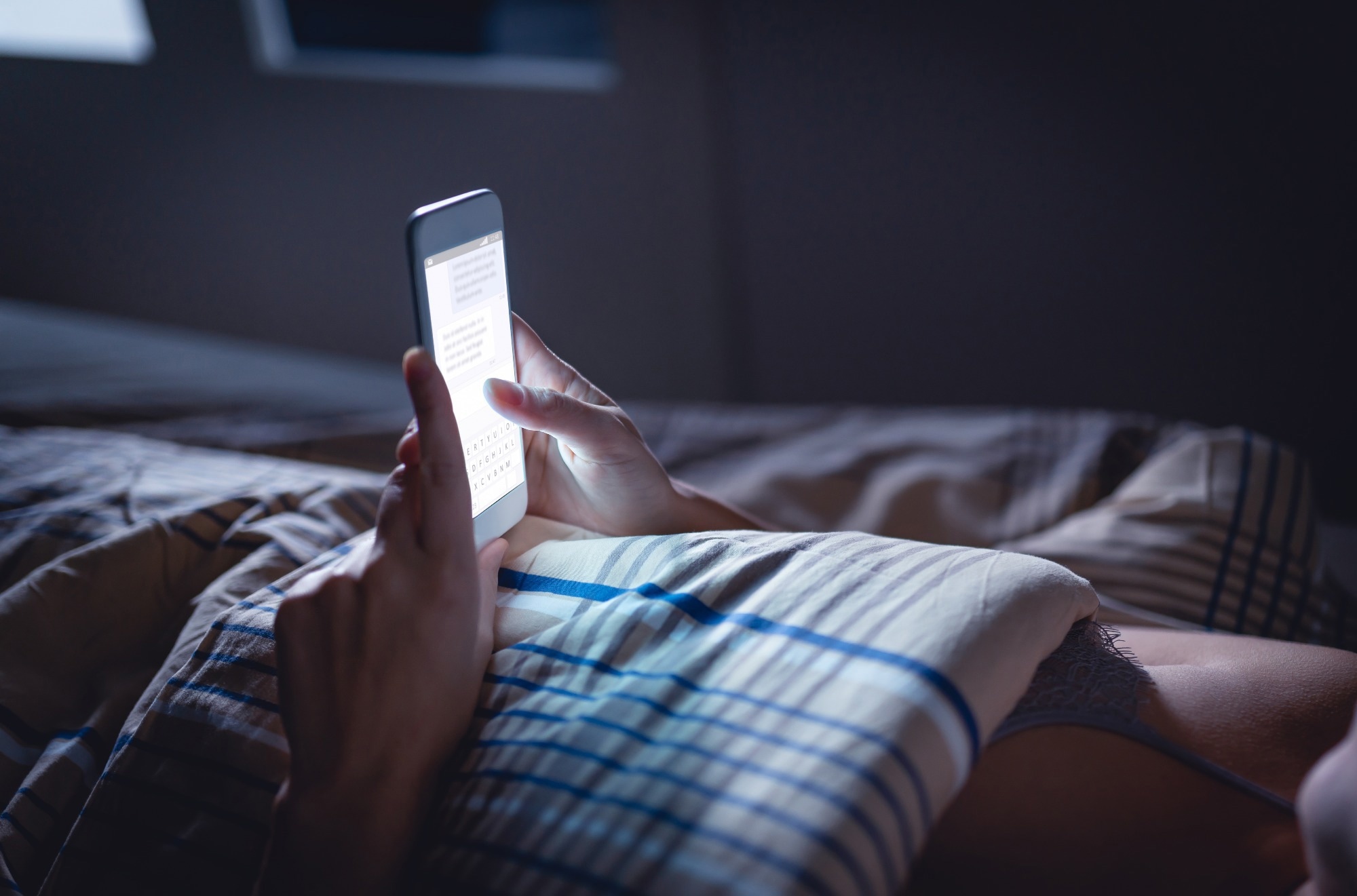Excessive digital technology use is associated with reduced sleep quality regardless of environmental and genetic factors, study finds

In a recent study published in the SLEEP Journal, researchers explored the association between poor sleep and the excessive use of digital technology among adolescents after adjusting for familial factors and examining the influence of environmental and genetic factors on the association.

Background
Although many studies have reported that excessive use of digital technology among adolescents and young adults is linked to lower sleep quality, recent research indicates that in studies that used relevant control groups, the association was weaker or non-significant.
This implied that a third unexplored factor, such as environmental or genetic influences, could be the underlying reason for these observed associations.
Factors related to parental control and lack of boundaries resulting in inconsistent bedtimes and excessive use of technology could be impacting the quality of sleep.
Digital technology is thought to impact sleep quality in various ways. Hyperarousal and the requirement to constantly interact with digital devices such as mobile phones, computers, tablets, gaming consoles, and the blue light emitted by digital screens that disrupt melatonin levels could all contribute to reduced sleep quality.
However, while various studies have reported that excessive digital device use has been linked to reduced nighttime sleep duration and quality and disproportionate sleep during the day, the impact of familiar factors such as genetics or environmental influences on the link between poor sleep quality and the excessive use of digital technology remains largely unexplored.
About the study
In the present study, the researchers used data from a longitudinal study that tracked the development of cohorts of twins in England and Wales born between 1994 and 1995.
The data comprised assessments conducted during home visits for a total of 1,116 families who had same-sex twins aged five between 1999 and 2000. The sample set comprised families from various socioeconomic backgrounds, and 90% of the participants were White.
Follow-up assessments were conducted through home visits at ages seven, 10, 12, and 18 years. While the follow-up assessments at ages seven, 10, and 12 also included interviews with the mothers or primary caregivers, the assessment at 18 consisted of interviews only with the participants.
The examined measures comprised an assessment of the digital device use levels based on an adapted Compulsive Internet Use Scale to determine whether technology use was problematic or affecting various aspects of their daily life.
Factors such as withdrawal symptoms when unable to access the internet or check the mobile phone, using digital devices to cope with or escape grief or low moods, preoccupation with the online world, and neglect of duties at work, home, or school were investigated.
The Pittsburgh Sleep Quality Index (PSQI), consisting of an 18-item list, was used to assess sleep quality. Additionally, a four-item loneliness scale and a diagnostic manual for mental health were used to assess levels of loneliness, anxiety, and depression symptoms, respectively.
Furthermore, the level of insomnia experienced by the mothers when the participants were aged 12 was also examined.
Results
The results reported that the excessive use of digital technology was associated with a lower quality of sleep among adolescents, even after controlling for symptoms of anxiety and depression, loneliness, disorderly behavior in the neighborhood, maternal insomnia, sex, and socioeconomic status.
Furthermore, the difference in technology use between twins was linked to corresponding differences in sleep quality, indicating that familial environmental factors did not significantly influence the association between excessive digital device use and lower sleep quality.
The researchers found that some of the environmental and genetic factors could be contributing to the excessive use of digital technology and poor quality of sleep, such as the use of technology within a peer group and genes affecting the two phenotypes.
Possible mechanisms through which the problematic use of digital technology impacts sleep quality were also discussed. Apart from poor sleep quality due to excessive blue light exposure interfering with the release of melatonin and the over-stimulation of the brain due to the use of digital devices closer to bedtime, the researchers also discussed the effect of late-night digital technology use on circadian rhythms.
Conclusions
Overall, the findings indicated that even after adjusting for familial factors such as the home environment or genetics and other factors such as loneliness, anxiety, and depression, the excessive and problematic use of digital devices was linked to reductions in sleep quality among adolescents.
-
Madrid-Valero, J. et al. (2023) "Problematic technology use and sleep quality in young adulthood: novel insights from a nationally representative twin study", SLEEP. doi: 10.1093/sleep/zsad038. https://academic.oup.com/sleep/advance-article/doi/10.1093/sleep/zsad038/7143702?searchresult=1&login=false
Posted in: Child Health News | Medical Science News | Medical Research News
Tags: Adolescents, Anxiety, Brain, Depression, Diagnostic, Genes, Genetic, Genetics, Insomnia, Melatonin, Mental Health, Research, Sleep, Technology, Twins
.jpg)
Written by
Dr. Chinta Sidharthan
Chinta Sidharthan is a writer based in Bangalore, India. Her academic background is in evolutionary biology and genetics, and she has extensive experience in scientific research, teaching, science writing, and herpetology. Chinta holds a Ph.D. in evolutionary biology from the Indian Institute of Science and is passionate about science education, writing, animals, wildlife, and conservation. For her doctoral research, she explored the origins and diversification of blindsnakes in India, as a part of which she did extensive fieldwork in the jungles of southern India. She has received the Canadian Governor General’s bronze medal and Bangalore University gold medal for academic excellence and published her research in high-impact journals.
Source: Read Full Article